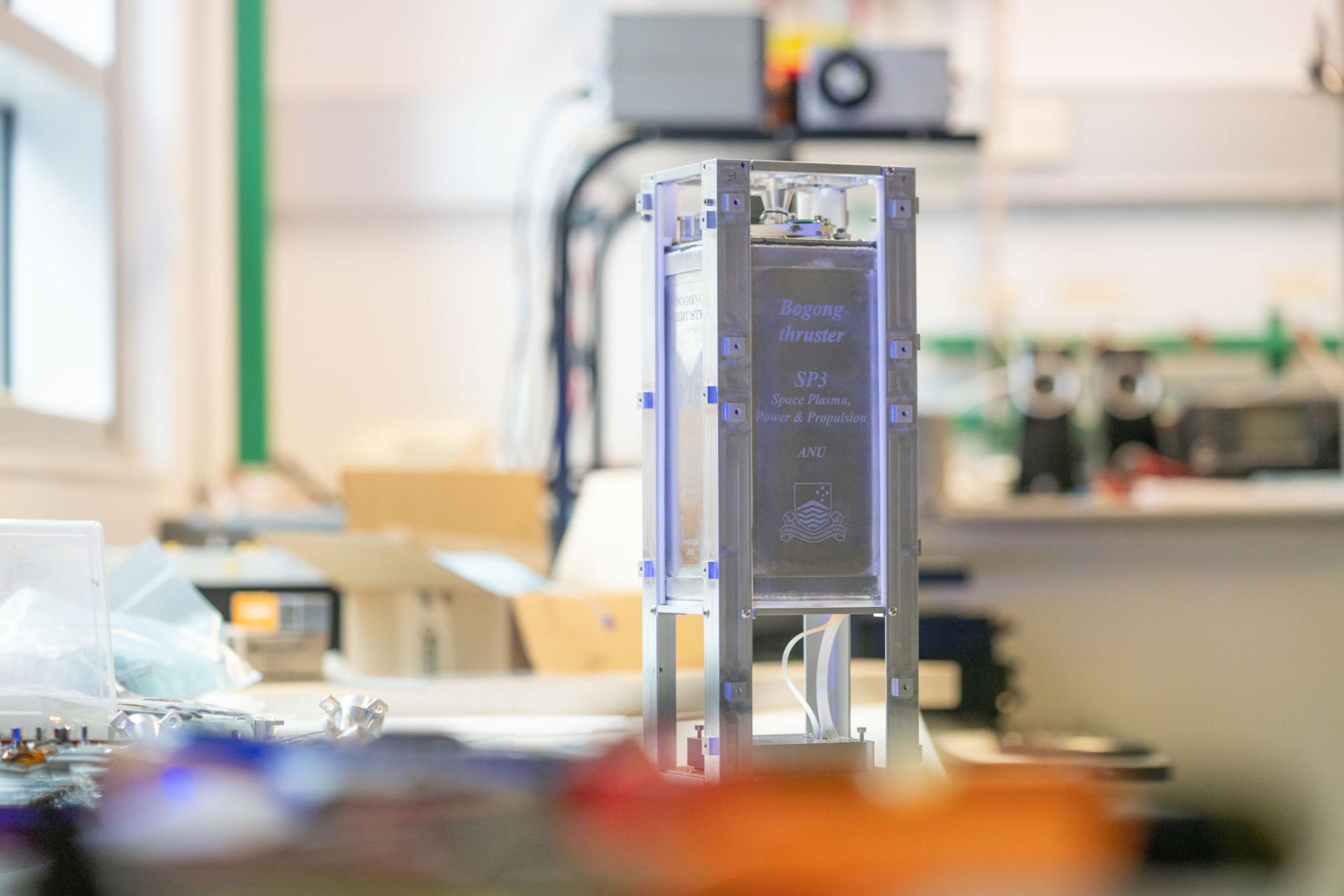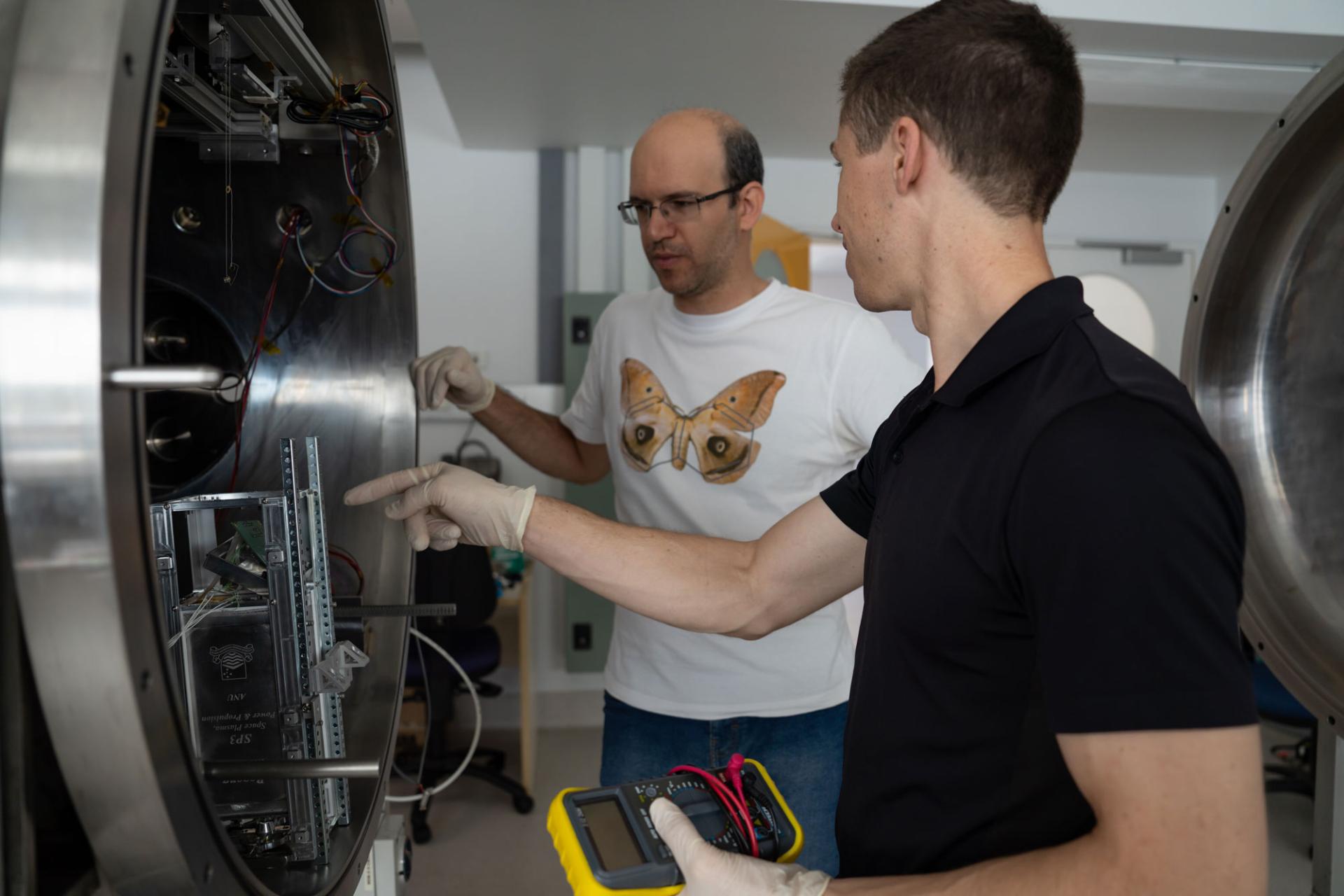Space is full of weird and wonderful technology, and an Australian company is continuing the trend by using old-fashioned mothballs to propel satellites.
Boswell Technologies is powering its new Bogong Thruster with naphthalene – which once protected our clothes as the key ingredient in mothballs, until milder substances took over in recent years. The thruster made history in 2023 by running in orbit aboard a Skykraft Block III satellite.
The advantage of naphthalene in space is that it sublimates when heated. This means it changes directly from a solid into a vapour that can propel a satellite, without producing any liquid in the process. Avoiding liquid is helpful in zero gravity, because it’s hard to stop it sloshing around and jamming components.

Professor Rod Boswell, founder of Boswell Technologies, says it was a student who first sparked the company’s interest in naphthalene.
“We had a PhD student, Dimitrios Tsifakis, working on our RF plasma ‘Pocket Rocket’ thruster… he found that the compressed gas system was prohibitive for small satellites,” Professor Boswell says.
“Launcher companies do not like compressed gas, especially at a few hundred bar of pressure, and compressed gas systems are too large and heavy for small satellites like CubeSats.
“Dimitrios then looked at solid propellants, and realised that naphthalene was ideal… he carried out a successful development campaign and achieved remarkable results that are set out in his PhD thesis.”

A simple solid propellant
In the past couple of decades, space industry research has identified iodine as another solid chemical suitable for providing propulsion via sublimation. However, the corrosive nature of iodine is bad news for storage tanks, so Boswell Technologies is promoting naphthalene as a simple alternative.
Even so, the team had to overcome some unique challenges to make the Bogong Thruster a reality. The biggest was creating a custom valve separating the naphthalene container from the expansion nozzle that releases the vapour.
Dr Mahdi Davoodianidalik, Technical Manager at the Australian National University’s Space Plasma Power and Propulsion group, worked with Boswell Technologies to create a sliding mechanism that avoids cold welding (similar materials bonding when placed together in the vacuum of space).
“Months were spent designing, fabricating, and testing different valve designs until we decided on a unique sliding type of valve,” Dr Davoodianidalik says.
“This valve only weighs 40 grams, and can work even if Naphthalene deposits inside it due to unforeseen conditions.”
“The second generation of the Bogong Thruster will have an improved version of this valve using the lessons learned from lab and in-orbit tests.”
Hitching a ride
It didn’t take long for the innovative approach of the Bogong Thruster to catch the eye of one of Australia’s biggest satellite companies.
After initially being approached by Boswell Technologies in 2022 for a paid Skyride to carry a thruster into orbit, Skykraft was so impressed with the technology it decided to buy two of the thrusters itself.
The second of the two, a refined version with improved performance, launched on board a Skykraft Block III satellite in June 2023 with SpaceX’s Transporter-8. In November 2023, it successfully demonstrated thrust that changed the satellite’s orbit – marking a world-first for naphthalene.
As Skykraft works towards delivering its own major projects, company CEO Dr Michael Frater lauds the mutually beneficial outcome of the thruster demonstration.
“Skykraft is pleased to be able to carry payloads like the Bogong Thruster to enable them to achieve crucial space heritage,” Dr Frater says.
“Through this activity, Skykraft supports innovation in the broader space community and has the opportunity to work with world leading companies as we start to deliver a global air traffic management service, to provide constant real-time communications between air traffic controllers and pilots.”
On the market
With a successful in-orbit demonstration under its belt, Boswell Technologies has now put the Bogong Thruster up for sale to the global market.
The company will continue to engage the Australian National University’s Space Plasma Power and Propulsion group as a subcontractor to fabricate the thruster and help further evolve the design.
“The in-orbit demonstration was a wonderful outcome for all concerned,” Professor Boswell says.
“It allows us to proceed with refining the basic Bogong Thruster, presenting a proven operational thruster to the world, and making the next step of entering into large commercial contracts.”
“We are now working on commercial development based on a solid foundation of in-orbit heritage, targeting small satellites and CubeSats.”

Australian SpIRIT launches to space

